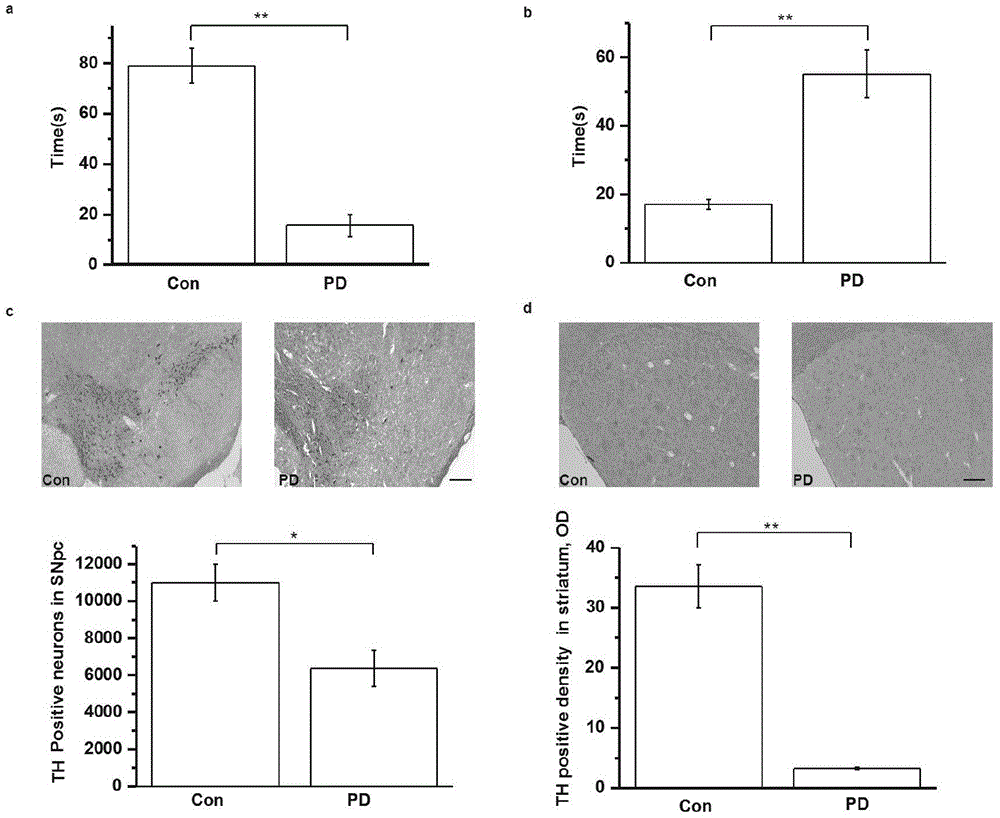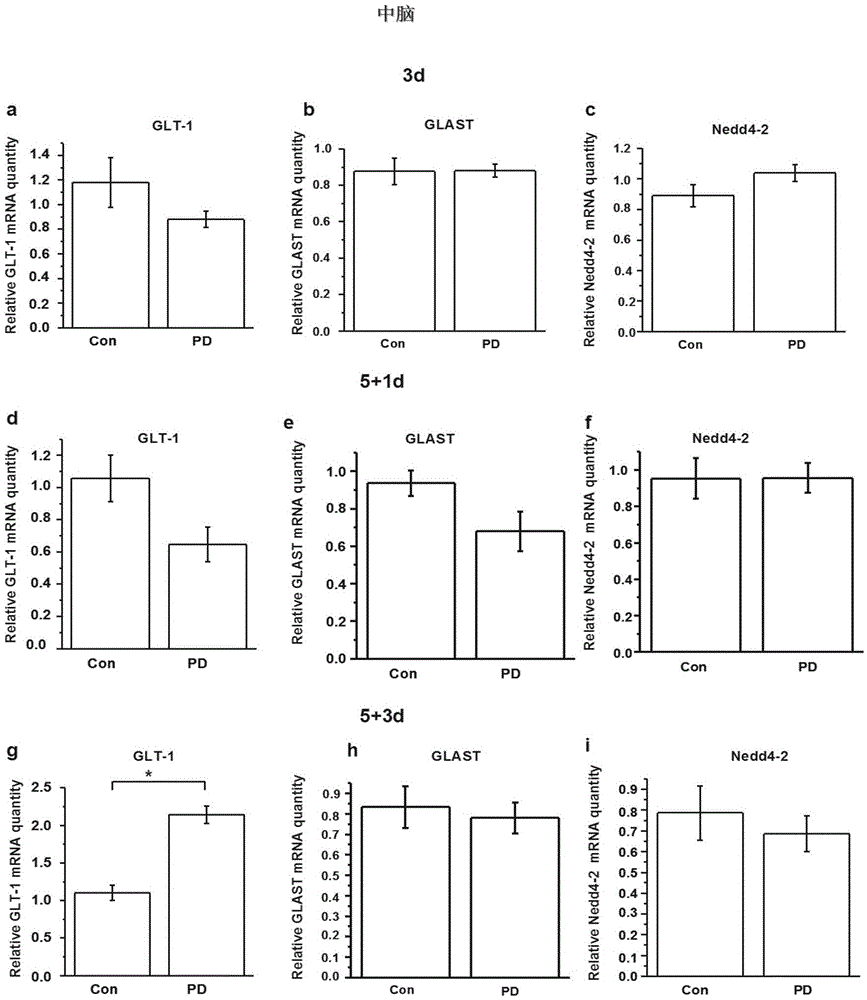Application of Nedd4-2 to parkinson's disease treatment
A disease and RNA interference technology, applied in the direction of medical preparations containing active ingredients, nervous system diseases, organic active ingredients, etc., to improve expression and reduce excitotoxic effects
- Summary
- Abstract
- Description
- Claims
- Application Information
AI Technical Summary
Problems solved by technology
Method used
Image
Examples
Embodiment 1
[0073] Embodiment 1: Preparation of Parkinson's disease mouse model
[0074] Principle: Neurotoxin MPTP is catalyzed by monoamine oxidase B in astrocytes to form active metabolite MPP in vivo + , transported into neuron cells by dopamine transporter, inhibits mitochondrial respiratory chain complex I, and leads to degeneration of dopaminergic neurons. Therefore, we choose C57 / bl mice to inject MPTP intraperitoneally to prepare Parkinson's disease model. Glutamate transporters GLAST and GLT-1 are mainly expressed on astrocytes, and astrocytes can remove more than 90% of glutamate in the intercellular space through GLAST and GLT-1, thereby protecting neurons from For glutamate excitotoxic injury, this example mainly studies the expression and activity changes of glutamate transporters GLT-1 and GLAST in PD and related regulation mechanisms by establishing a PD model.
[0075] Methods: 12-week-old healthy male C57 / bl mice (body weight about 25-30g) were randomly divided into nor...
Embodiment 2
[0077] Example 2 Detection of mRNA expression levels of glutamate transporters and Nedd4-2 in various regions of the mouse brain
[0078] Method: The PD mouse model was produced by intraperitoneal injection of MPTP (the specific method was the same as in Example 1). On the third day after MPTP injection, and on the first and third day after PD model establishment, a certain amount of mice were taken respectively. The midbrain, striatum and cerebral cortex were separated, and the mRNA expressions of GLT-1, GLAST and Nedd4-2 in each part were detected by qPCR. Mean ± standard error. * p** p<0.01.
[0079] result:
[0080] figure 2 It was shown that in the midbrain, the expression level of GLT-1 mRNA in PD mice was significantly up-regulated 3 days after modeling.
[0081] image 3 It was shown that in the striatum, 3 days after MPTP injection, GLT-1 mRNA levels were significantly reduced in the PD group 1 day and 3 days after modeling, and GLAST and Nedd4-2 mRNA levels wer...
Embodiment 3
[0084] Example 3 Detection of GLT-1, GLAST, p-Nedd4-2 and Nedd4-2 protein expression levels in various regions of the mouse brain
[0085] Method: The PD mouse model was created by intraperitoneal injection of MPTP (the specific method is the same as in Example 1), on the third day (3d) after MPTP injection, and on the first day (5+1d) and third day after PD modeling (5+3d), take a certain amount of mice each, separate the midbrain, striatum and cerebral cortex, and detect the protein expression levels of GLT-1, GLAST, p-Nedd4-2 and Nedd4-2 in each part by Western blotting, and apply ImageJ software was used for statistical analysis of data. mean ± standard error, * p<0.05. The substantia nigra is the largest nuclei of the midbrain, but because the substantia nigra is small and difficult to obtain, in this experiment we isolated the midbrain and carried out corresponding detection. In addition, the expression of phosphorylated Nedd4-2 in the statistical graph is the percent...
PUM
 Login to View More
Login to View More Abstract
Description
Claims
Application Information
 Login to View More
Login to View More - R&D
- Intellectual Property
- Life Sciences
- Materials
- Tech Scout
- Unparalleled Data Quality
- Higher Quality Content
- 60% Fewer Hallucinations
Browse by: Latest US Patents, China's latest patents, Technical Efficacy Thesaurus, Application Domain, Technology Topic, Popular Technical Reports.
© 2025 PatSnap. All rights reserved.Legal|Privacy policy|Modern Slavery Act Transparency Statement|Sitemap|About US| Contact US: help@patsnap.com



